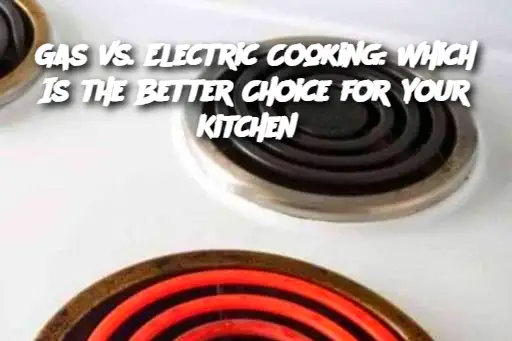Introduction:
When it comes to cooking, the type of stove you use can make a big difference in both your cooking experience and the final results. The debate between gas and electric stoves has been ongoing for years, with passionate advocates on both sides. Each cooking method has its advantages and drawbacks, and the choice ultimately depends on your personal preferences, cooking style, and kitchen setup. In this article, we’ll explore the key differences between gas and electric cooking, helping you determine which is better suited to your needs.
Ingredients/Factors to Consider:
Heat Control:
Gas: Offers instant and precise heat control, making it ideal for recipes that require quick temperature adjustments. You can easily see the flame, allowing for a more hands-on approach to cooking.
Electric: Provides more consistent heat but may take longer to adjust. Most electric stoves have a smoother heat curve, which can be beneficial for slow cooking but may lack the precision that some cooking techniques demand.
Cooking Speed:
Gas: Heats up instantly, allowing you to start cooking right away. This makes it a faster option, particularly for tasks like stir-frying or searing meats.
Electric: Takes longer to heat up, especially with coil or ceramic top stoves. However, induction electric cooktops can heat up quickly, similar to gas stoves, and offer fast, efficient cooking.
Cleaning Ease:
Gas: Requires more maintenance as the burners and grates can get greasy and difficult to clean. Spills and food splatters can burn onto the surface, requiring regular scrubbing.
Electric: Generally easier to clean, especially with flat ceramic or induction cooktops. However, electric coil stoves can still accumulate food spills and grease that may need scrubbing.
Energy Efficiency:
Gas: While gas stoves provide quick heat and precise control, they are not the most energy-efficient. The heat escapes around the sides of the pan, which can result in energy loss.
Electric: Induction cooktops are the most energy-efficient type of stove, as they directly heat the cookware. Electric coil or smooth top stoves are less efficient, with some energy loss as heat escapes from the pan.
the rest on next page
ADVERTISEMENT

